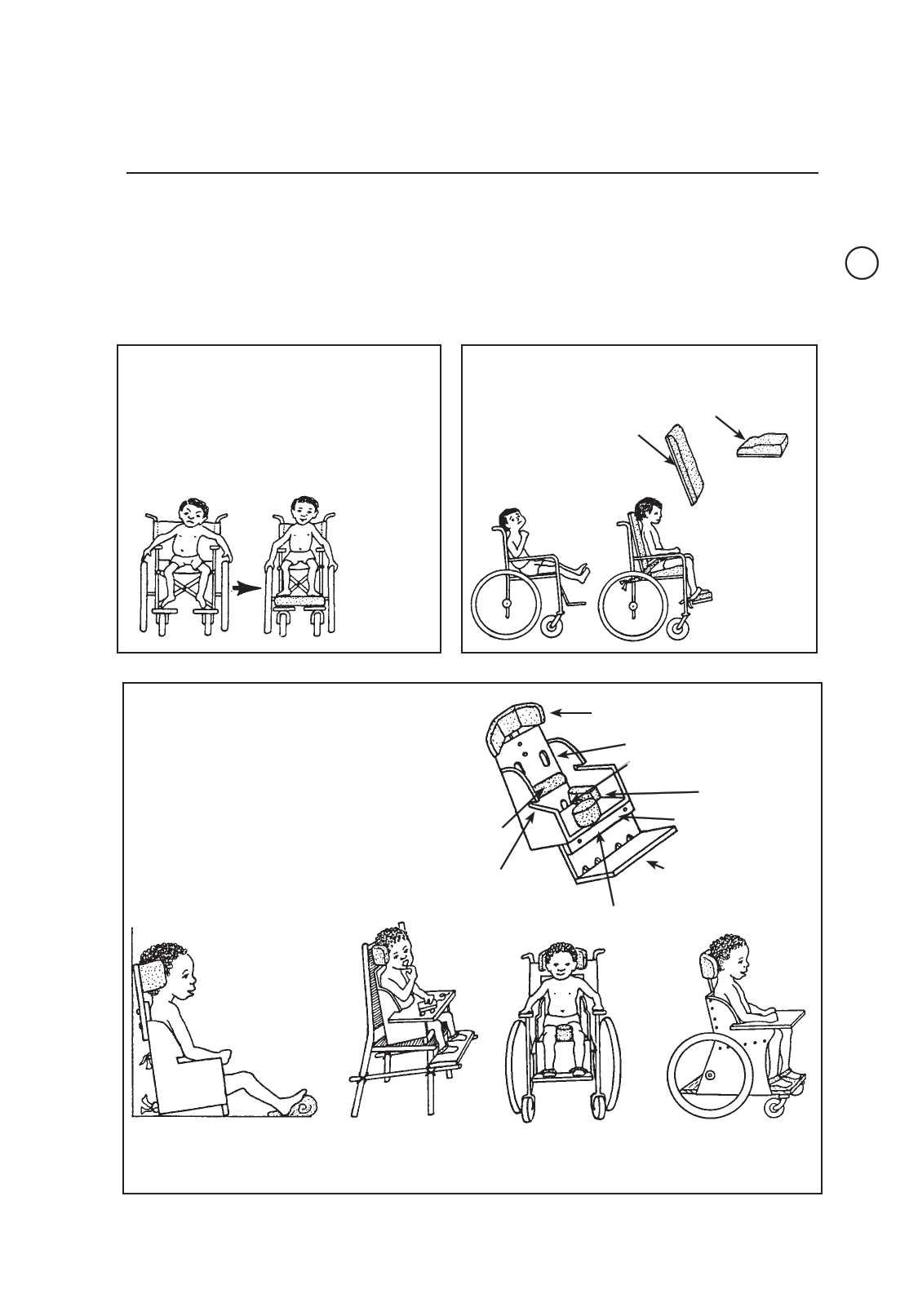
Adaptations for Wheelchairs
and Other Sitting Aids
65CHAPTER
607
Many children need more support or special positioning than is usually provided
by a regular chair or ordinary wheelchair. So we should try to get or make a chair
designed to fit the individual child. Unfortunately many children get wheelchairs that
are much too big. Often no others are available. Here are 3 ways to adapt them.
CP
1. If a folding chair is too wide,
make the cloth seat and back
narrower. The chair will not open
as wide (but may be too high).
TOO WIDE
NARROWER (BUT HIGHER)
Be sure to
check how
well the
child can
reach to
turn the
wheels
2. If the chair is too big from front to
back, or if the child needs a better
position, try a wedged cushion and
padded backboard.
Some children
need straps
across their
hips or
ankles to
keep a good
position.
(See the
precaution on
p. 589.)
3. If still more help is needed
for positioning the child,
make a sitting frame
designed to meet her needs.
Here is an example.
CAUTION: Not all children will need
all the special features shown here.
Some will need still other features.
Adapt special features to the needs
of the particular child, and test them
before making them permanent.
lower-back
support pad
notch for
removable
table-board
adjustable head support (padded)
holes for chest support strap
and hip support strap
hip support pads
lift for tilting seat back
removable footrest with
holes for foot straps
knee separator
The sitting frame can
be used on the ground.
It can be placed in a
chair (or strapped into
the seat of a car).
It can be fitted
into a wheelchair.
Or make a simple wood
wheelchair with all the
features of the sitting frame
(see p. 620 and 621).